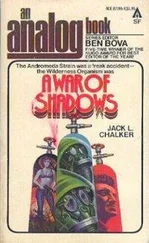And to my loving wife, Kathleen Hope Matz, I can only say, in the words of the old Waylon Jennings song, where would I be without you?
Jack Cheevers Oakland, California April 2013
On an October day in 1952, a Soviet coast guard cutter eased its way toward a headless corpse floating off Yuri island, a small link in the Kuril archipelago that stretches from northern Japan to Siberia.
Clad in a black flight suit, the body was the earthly remains of a U.S. Air Force lieutenant named John R. Dunham. The 24-year-old officer had been navigating an RB-29 reconnaissance plane northeast of Japan’s Hokkaido island when two Soviet fighters opened fire. The lumbering, propeller-driven American aircraft caught fire and crashed into the sea; Dunham and seven other airmen perished. The Russians buried Dunham a few days later on Yuri without bothering to hold a ceremony or notify his next of kin.
The incident was just one of many Cold War run-ins—some of them fatal—between U.S. intelligence collectors and communist defenders. Starting in 1945, American planes, surface ships, and submarines skirted the borders of the USSR, China, North Korea, and various Eastern European nations, probing and analyzing their defenses.
The Sea of Japan was a hot spot in this little-known drama. U.S. planes monitored hundreds of miles of coastline running from Wonsan, a major North Korean port protected by scores of MiG fighters, to Vladivostok, headquarters of the Soviet Pacific Fleet, and farther north to Petropavlovsk, another important Russian naval station near the tip of the Kamchatka Peninsula. Flying aboard lightly armed aircraft stuffed with eavesdropping equipment, specialists known as “ravens” tuned in on communist radio, Morse code, and radar emissions. Their planes usually stayed in international airspace, but occasionally they darted over the border, as if on a bombing run, to “spoof” communist air defenses. When alarmed ground commanders switched on antiaircraft radars, the ravens carefully noted their location and frequencies, crucial targeting data in the event of war. The American aircraft also recorded details of how Soviet jets were scrambled, and sniffed the atmosphere for telltale chemical traces of nuclear tests.
Soviet and North Korean fighters often were content simply to fly alongside, watching the watchers. But sometimes they reacted with lethal fury. Between 1950 and 1956, for instance, seven U.S. reconnaissance aircraft were shot down over the Sea of Japan, the Kurils, or near Siberia; at least 46 airmen were killed or listed as missing. (Another plane bearing 16 Americans disappeared in a typhoon.) Washington responded with sharply worded protests and more spy flights.
U.S. submarines, meanwhile, kept an eye on Soviet naval operations. Often prowling perilously close to shore, they taped distinctive propeller noises made by Russian subs, compiling an audio “library” that could identify any Soviet undersea boat anywhere in the world. American crews planted listening devices on the ocean floor to detect communist naval movements. They observed sea trials of the Russians’ new missile subs and measured the telemetry of ballistic rockets as they arced from launch sites in the USSR to splash down in the Pacific.
Aircraft and submarines were an expensive way to spy, however. They had the additional disadvantage of being able to stay on target for only relatively short periods. The Navy sometimes used destroyers for surveillance, but such missions took fighting ships away from more pressing duties.
Faced with the same problems, the Soviets solved them by loading eavesdropping gear aboard fishing trawlers, inexpensive, harmless-looking vessels that could loiter in the same area for days or weeks on end. By 1965, almost three dozen trawlers were watching American nuclear subs coming and going from bases in South Carolina, Scotland, and Guam; studying the tactics of U.S. battle groups maneuvering on the high seas; and warning the North Vietnamese whenever Navy fighter-bombers lifted off from aircraft carriers in the Gulf of Tonkin.
The trawlers sometimes even tried to interfere with the carriers, cutting across their bows as they turned into the wind to launch planes. One Soviet boat, the Gidrofon , was involved in six “provocative incidents” in the South China Sea during a single month, December 1965. Another trawler nearly collided with an American destroyer off Long Island, New York, as the Russian captain rushed to recover a test missile fired from the atomic sub USS George Washington .
The United States soon began outfitting its own small, cheap spy ships under Operation Clickbeetle, a top secret Navy program to pack refurbished freighters with advanced electronics. Clickbeetle was the pet project of Dr. Eugene Fubini, an energetic, bushy-haired physicist who oversaw key Pentagon research initiatives in the early 1960s. Fubini believed the snooper boats could play an important role in keeping tabs on the Soviets’ rapidly expanding blue-water fleet, which was challenging the U.S. Navy’s supremacy in both the Pacific and the Mediterranean. He wanted up to 70 such vessels, although the Navy ultimately commissioned only three.
The most tragically famous of these was the USS Pueblo , which was attacked and captured by North Korean patrol boats in January 1968.
The loss of the Pueblo —which was jammed with sophisticated electronic surveillance gear, code machines, and top secret documents—turned out to be one of the worst intelligence debacles in American history. The ship’s seizure pushed the United States closer to armed conflict on the Korean peninsula than at any time since the Korean War in the early 1950s. And subsequent investigations by Congress and the Navy revealed appalling complacency and shortsightedness in the planning and execution of the Pueblo ’s mission.
Nations spy on one another for a variety of reasons, some quite sensible. The most common one is the fundamental imperative of self-preservation: National leaders have a keen, if not mortal interest in knowing whether a rival state is getting ready to attack them or their allies. The main purpose of the Pueblo ’s ill-starred voyage was to give the United States a clearer picture of North Korea’s ability to wage war. “Our knowledge about North Korean military capabilities is limited and may not be altogether reliable,” Under Secretary of State Nicholas Katzenbach wrote in a secret memo to President Lyndon Johnson. “Our limited intelligence makes it difficult to estimate the precise nature of the threat to South Korea.” That blind spot was particularly alarming, since 50,000 American troops were then stationed in South Korea as a bulwark against the aggressive north.
But intelligence gathering can be a double-edged sword. On one hand, acquiring reliable information about an enemy’s intentions and capabilities may have a calming effect on international relations. If Country A verifies that Country B is not, as rumored, massing troops on their common border, Country A is less likely to mobilize its own forces, thereby reducing the chances of war. Paradoxically, good spy work can also create dangerous volatility between states. Such was the case in 1962, when a U-2 aircraft photographed Soviet technicians installing long-range missiles in Cuba, leading the United States to impose a naval quarantine on the island and raising the fearsome specter of nuclear war between the two superpowers.
In some instances, the very act of spying can catalyze international tension, as the Pueblo episode demonstrates.
Then as now, North Korea was one of America’s most implacable enemies. In the late 1960s, it possessed one of the largest air forces in the communist world, along with a formidable army. Its Stalinist leaders were deeply committed to conquering South Korea. And with so many U.S. soldiers deployed in the south, Washington had ample reason to pursue additional information about what North Korea was up to.
Читать дальше












